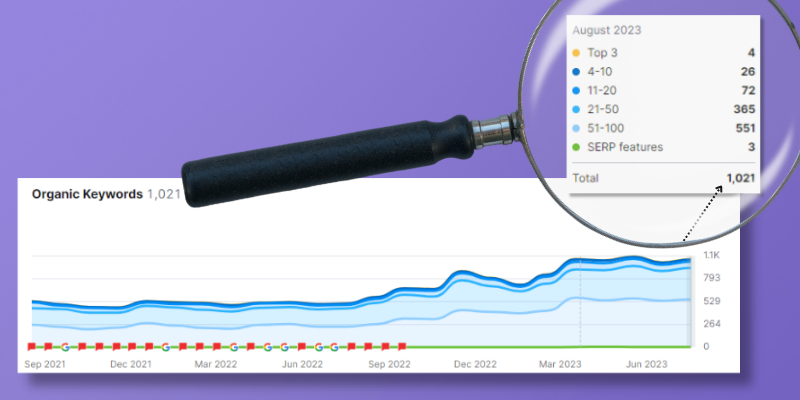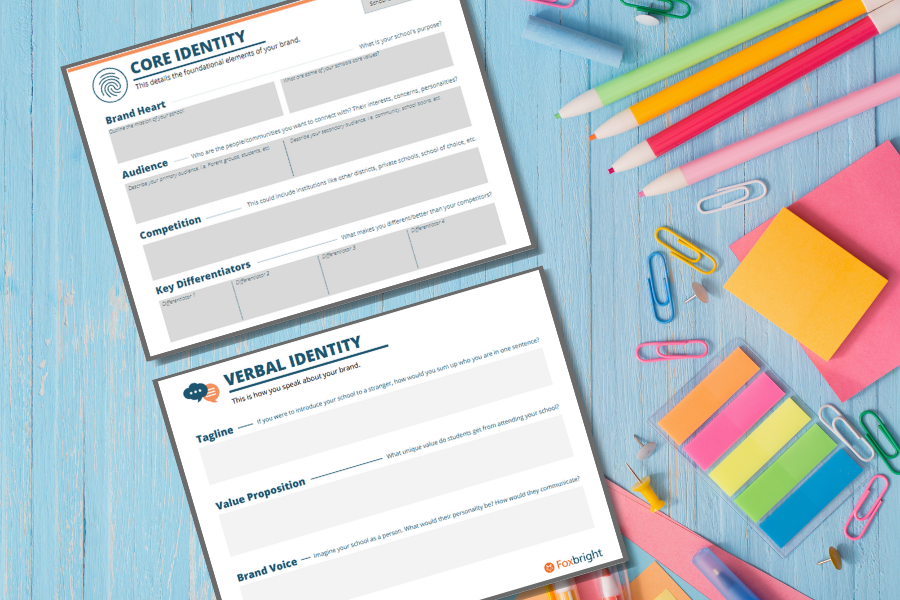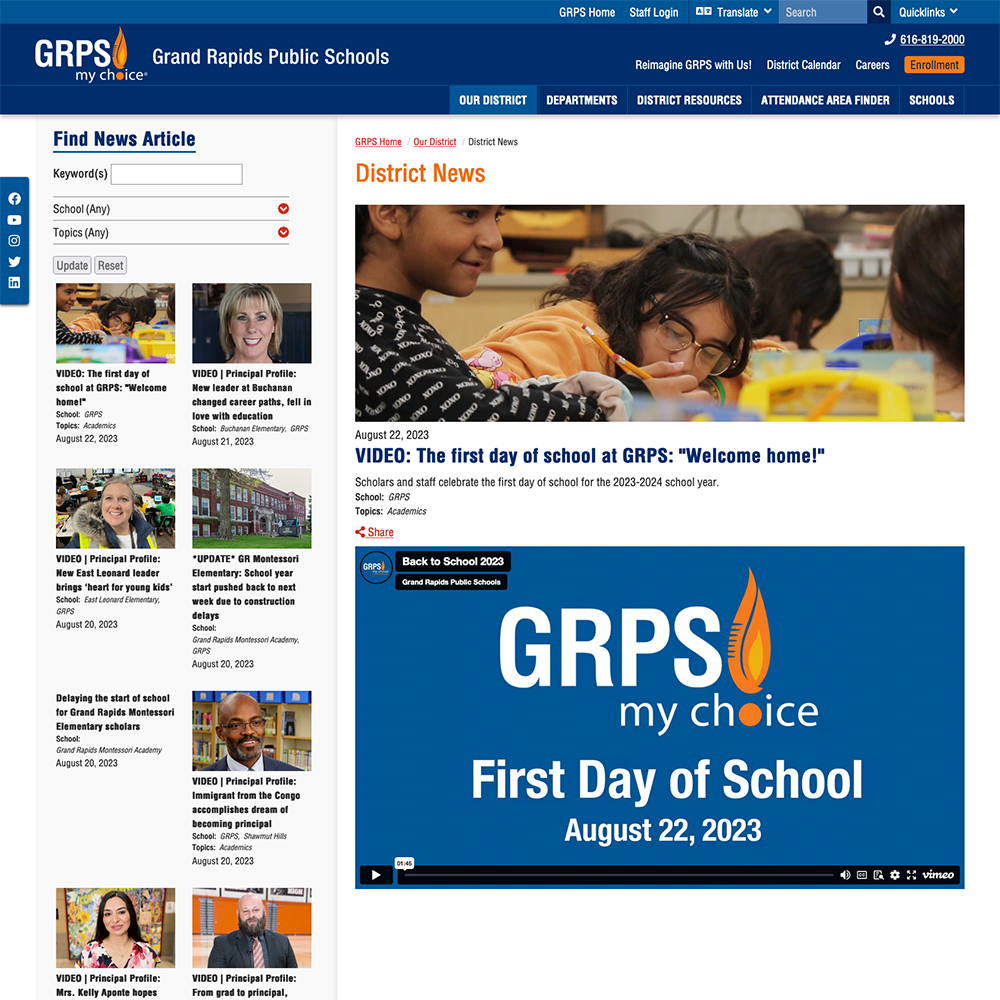From bulletin boards to mobile apps, schools have just about as many available channels of communication to choose from as they have stories to tell! However, as most are not blessed with a large, multi-person marketing department, it can be difficult to determine which communication channels should be prioritized. The most beautiful newsletter in the world isn’t worth much if the folks you’re trying to reach never see it. Do you find yourself struggling to choose the most effective channel for engaging with your school’s audience?
In today's digital age, schools have multiple platforms to decide from when sharing important disseminating information about their activities, curricula, and events.
In this article we dial in on what are typically the two biggest platforms for connecting with a school’s community: Social Media and Website content (specifically school blogs, newsletters etc.) The focus of this article is to compare and contrast the benefits of each so you can feel confident that your school earns the best engagement possible when sharing events, job postings, updates, etc. with your website or social media content in terms of search engine optimization (SEO) trends and engagement opportunities. By the end of this read, we aim to show you which platform can deliver more ROI for your school or ISD in terms of online brand visibility. Let's get started!
Website Blog Content
Pros: School Website blogs are an often-overlooked yet powerful tool for enhancing your school's online presence. Here's why:
1. SEO (Search Engine Optimization) ValueBoost: To paint a clear picture of the value of SEO think about the last time you bought something online. Perhaps you saw a display ad or pre-roll advertisement on YouTube. But, in today’s age of digital competency, we’d wager you already had at least some idea of what you were searching for and wanted to explore options. Maybe you typed in “post-recess air fresheners” or “dry erase markers that last longer than one week.” (cheeky examples, but you get the point.)
Regularly updated blog contents that focus on the type of relevant keywords your audience is searching for (i.e. ‘open enrollment Detroit,’ ‘teaching jobs in Dallas,’ etc.) can significantly improve your school’s search engine rankings. When you can answer the questions that your target audience is asking, then search engines will reward your efforts by pushing you up higher in search results; thereby making it easier for prospective students and parents to find you online.

2. Authority Building: Blogs allow schools to showcase their expertise and thought leadership, establishing trust with readers and fostering a reputation of excellence. If you’re looking for a couple of institutions that are doing a fantastic job here, check out:
 3. Long-Term Results: Unlike social media posts, which have a short lifespan, blog posts continue to attract traffic over time, providing long-lasting results. One clear example is how they can be repurposed for other mediums - especially if your website CMS has the ability to automatically push out notifications on multiple channels.
3. Long-Term Results: Unlike social media posts, which have a short lifespan, blog posts continue to attract traffic over time, providing long-lasting results. One clear example is how they can be repurposed for other mediums - especially if your website CMS has the ability to automatically push out notifications on multiple channels.
Cons:
1. Time-Consuming: Creating high-quality blog content requires a significant time investment from your staff. Not to mention the process of strategically identifying which keywords and blog topics to target often requires some big data analytics competencies. If you’re interested in what that looks like, Foxbright offers a complimentary Website SEO Health Audit to help you get started.
2. Delayed Results: While SEO is a proven way to increase brand visibility, it is also the very definition of the snowball effect. Depending on the topic, it typically takes several months of consistent effort to start delivering results.
3. Engagement Challenges: Blogs may not generate as many immediate interactions as social media posts. They must have clear CTAs (call-to-actions) that encourage website visitors to take the next step of engagement. Furthermore, in order to most accurately measure their impact, you’ll want to ensure that you have an active and properly configured Google Analytics account set up to track and evaluate the actions your visitors are taking.
Social Media Content
PROs: Social media is a highly effective platform for engaging with your school community. Here are its key benefits:
1. Direct Engagement: Social media allows for real-time interaction with students, parents, and the wider community. Social Media opened up a whole new method for individuals to interact with brands (both positively & negatively) by improving accessibility and speed of communication.
2. Brand Personality: One of our favorite quotes explaining the power of branding is from Jeff Bezos: “Your brand is what people say about you when you’re not in the room.” Platforms such as Facebook, Tik-Tok, Instagram, and Twitter have been established as the key medium for many schools to showcase their unique character and culture. When done correctly and consistently, this fosters a sense of belonging among students and staff while presenting a unified voice to the public.
Bonus resource: How do you get everyone on the same page for something as big as a brand? Well, a good place to start is by putting it all… on one page. This school branding guide is a great place to start to identify and capture the things that make your school unique: mission, values, key differentiators, and more. Download the free School Branding Guide here!

3. Viral Potential: Well-crafted social media posts can go viral4, significantly boosting your school's visibility. One interesting component of social media reach in 2023 is that the kind of school content most likely to go viral are video posts - which makes sense as trends continue to show video outperforming text & images combined in terms of engagement. Word to the wise: virality isn’t always a good thing…
3 of our favorite school videos that went viral this year:
-
 Click to see a larger version
Teacher’s ‘Keep Them Kids’ summer break video
Skip to end of gallery
Skip to start of gallery
Click to see a larger version
Teacher’s ‘Keep Them Kids’ summer break video
Skip to end of gallery
Skip to start of gallery
-
 Click to see a larger version
‘Tears of Joy‘ from Jacksonville students and classmates
Skip to end of gallery
Skip to start of gallery
Click to see a larger version
‘Tears of Joy‘ from Jacksonville students and classmates
Skip to end of gallery
Skip to start of gallery
-
 Click to see a larger version
Lovable Philadelphia Teacher
Skip to end of gallery
Skip to start of gallery
Click to see a larger version
Lovable Philadelphia Teacher
Skip to end of gallery
Skip to start of gallery
Cons:
1. Short Lifespan: Social media posts are typically a ‘flash in the pan’ compared to SEO’s snowball effect. In order to stay relevant and visible, constant updates are required.
2. No Direct Connection to Website: Your website is the main hub for organizing and sharing your school's story; which means that a primary marketing goal should be to keep visitors engaged in this 'digital ecosystem.' Social media platforms create one more hurdle to jump through to reach your website. So while visitors may engage with the specific content you post, it can't be guaranteed that they will take the next step of exploring your brand holistically.
3. Dependent on Algorithms: The visibility of your posts depends largely on the social media platform’s algorithm, which can change frequently. Each social media platform makes algorithmic changes - often multiple times a year - as they’re constantly looking to increase the amount of time people spend on their platform. For this reason, you’ll really need someone to keep their finger on the pulse of new developments and adjust accordingly.
Current SEO Trends
The world of SEO is always changing. Currently, the focus in this field is on mobile optimization, voice search compatibility, and user-focused optimization5. Both blog content and social media content should be optimized with these trends in mind to reach a broader audience.
Social Media vs. Website Content: Conclusion on the Best Marketing Channel for You.
When it comes to ROI and brand visibility, both website blogs and social media have their strengths. Website blogs tend to deliver more consistent long-term results, while social media can provide a quick visibility boost, especially if a post goes viral. A balanced approach utilizing both website and social media content represents the best approach for most schools.
However, given the lasting impact of blog content and its effectiveness in building online authority, we believe that schools prioritizing website blogs/stories deliver a higher ROI in the long run. They help establish your school or ISD as a leader in education, thereby attracting more students, engaging & informing parents, and garnering respect within the educational community.
-
 Click to see a larger version
Grand Rapids Public Schools
With 40+ schools, GRPS is able to share news from across the district to individual building pages and offer a robust story search on their District News page.
Visit GRPS
Skip to end of gallery
Skip to start of gallery
Click to see a larger version
Grand Rapids Public Schools
With 40+ schools, GRPS is able to share news from across the district to individual building pages and offer a robust story search on their District News page.
Visit GRPS
Skip to end of gallery
Skip to start of gallery
-
 Click to see a larger version
Hamilton Community Schools
Hamilton Community Schools keeps their homepage dynamic by using the stories feature to surface news from around the district.
Visit HCS
Skip to end of gallery
Skip to start of gallery
Click to see a larger version
Hamilton Community Schools
Hamilton Community Schools keeps their homepage dynamic by using the stories feature to surface news from around the district.
Visit HCS
Skip to end of gallery
Skip to start of gallery
Remember, the world of school marketing & communication is vast. What works for one ISD might not work for another. The Foxbright school marketing team of experts is here to help you cut through the clutter to find what works best for your specific situation. If you’re focusing on increasing enrollment, attracting talent, or otherwise raising brand awareness around an outreach initiative this year, a great first step is to connect below for a free consultation on how you can achieve your 2023 goals.
We hope this brief overview has provided some clarity and guidance but we also want to hear what you think! Whether you agree with our conclusion or can prove us wrong, we’d love to hear your thoughts and even feature them in an updated blog post.















